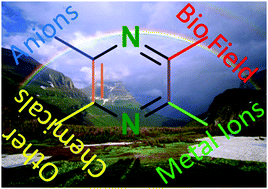Azaacenes as active elements for sensing and bio applications
Abstract
Since azaacenes have electron-deficient backbones and lone-pair electrons on nitrogen centers, they can efficiently detect the target molecules or ions through supramolecular interactions such as anion–π attractions and coordinate bonding. These special features make azaacenes very designable for various sensors, which can be further used in the bio field. In this review, we will summarize the recent progress in the applications of azaacenes in sensing and bio fields. We believe that a rapid development in the research of sensors and bio applications based on azaacenes will be witnessed in the coming years due to their tuneable structures, optical properties and binding abilities.


 Please wait while we load your content...
Please wait while we load your content...